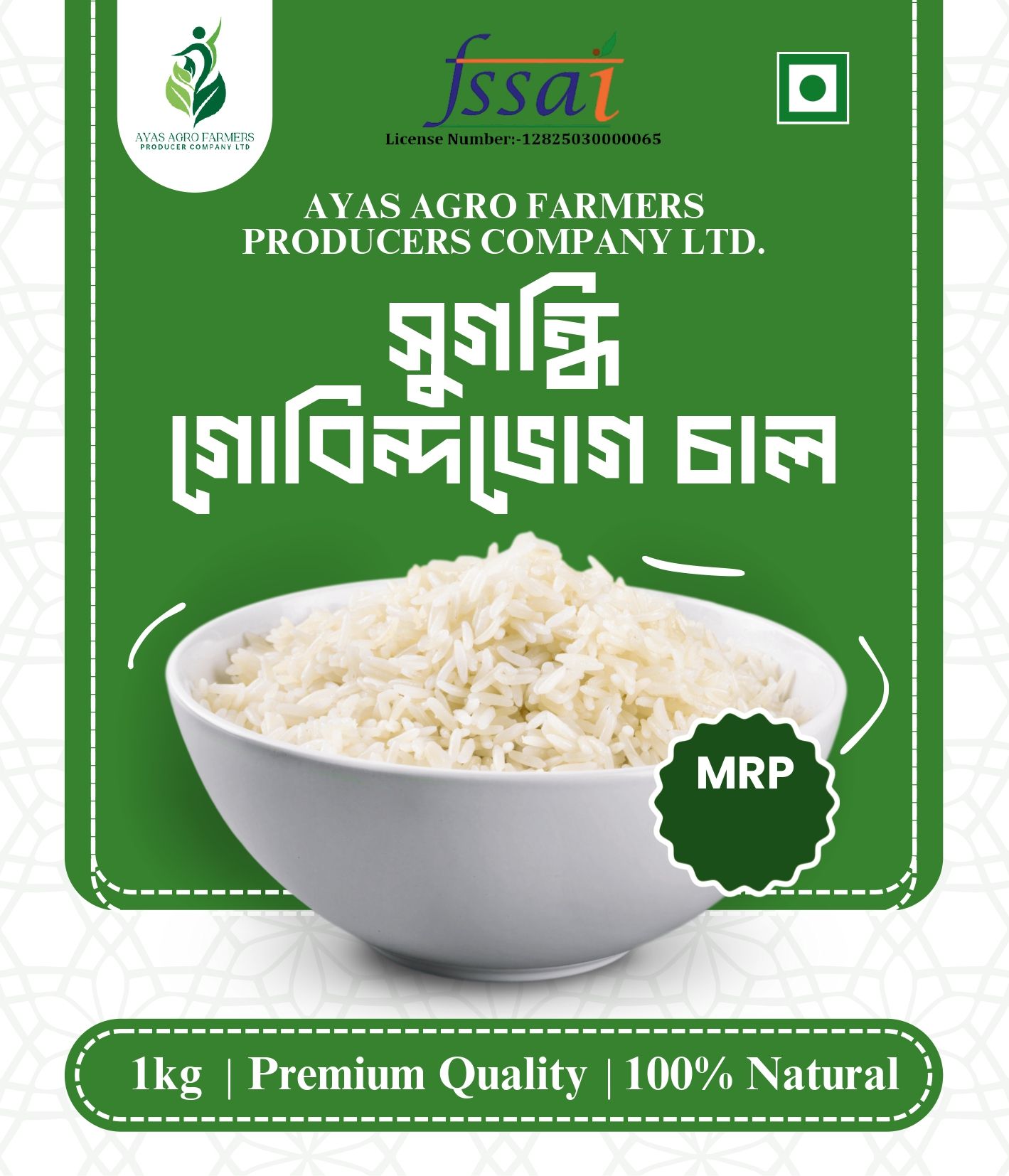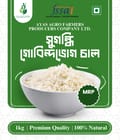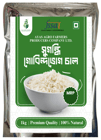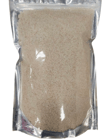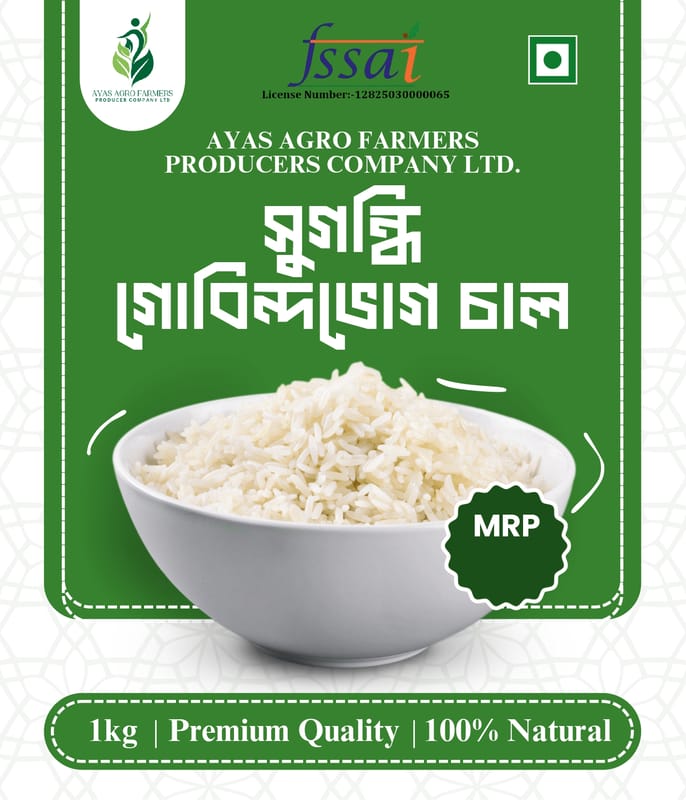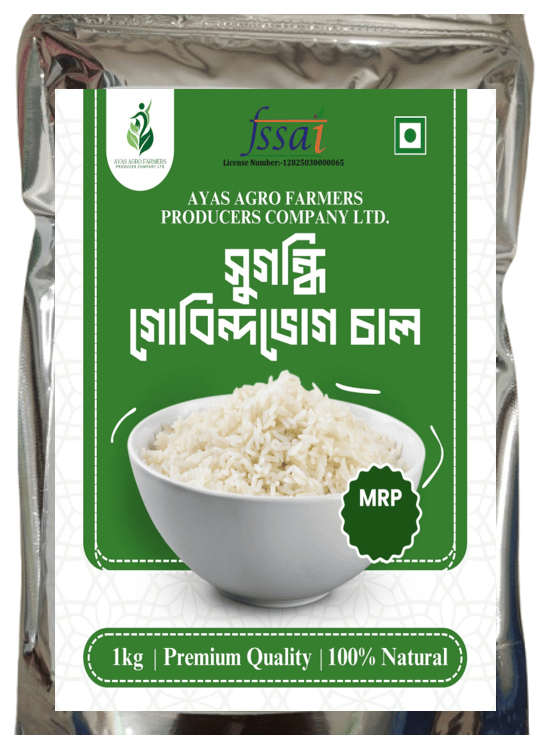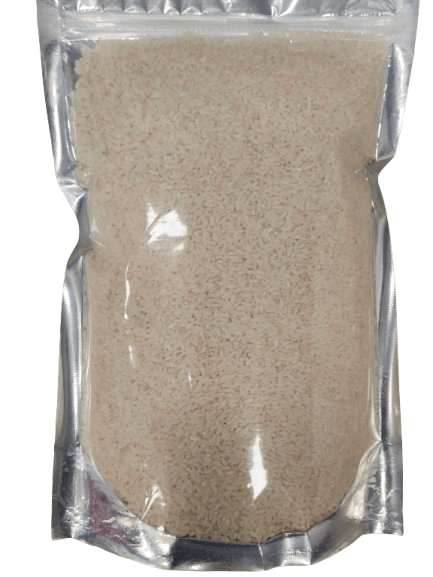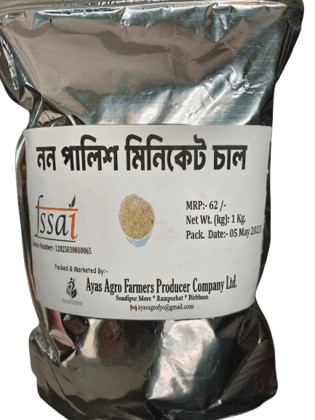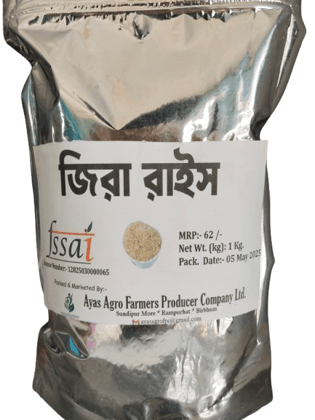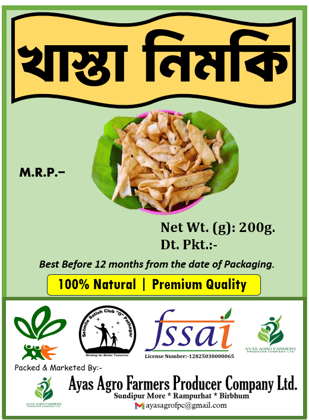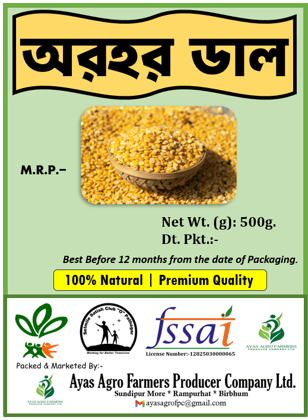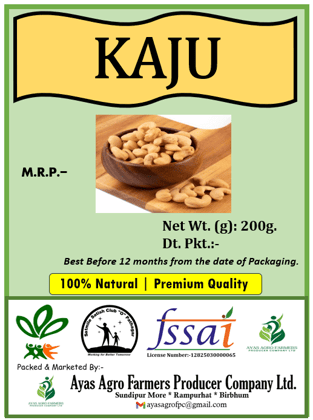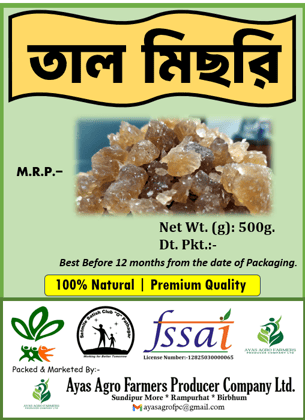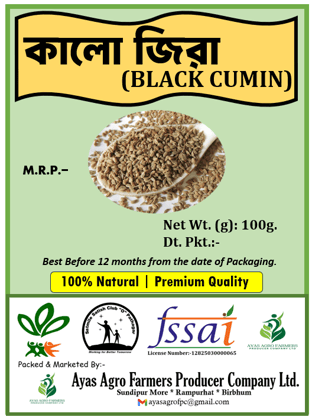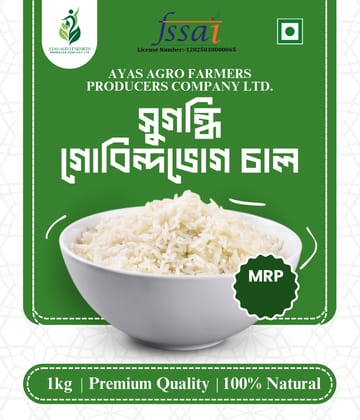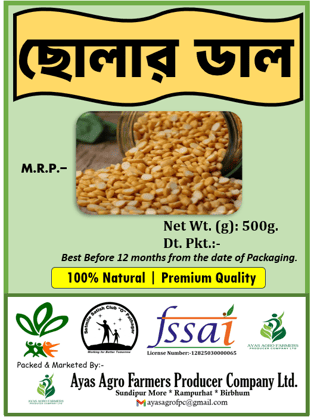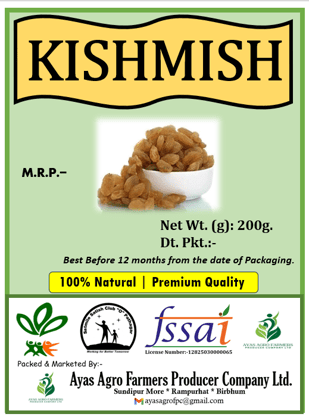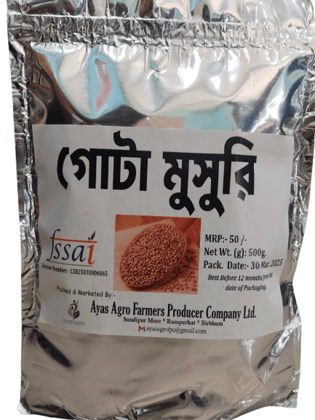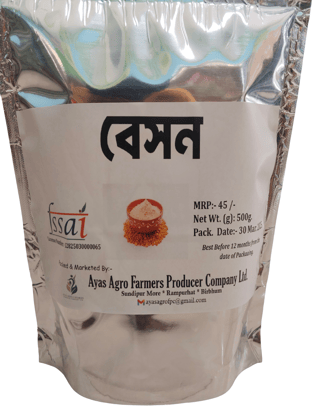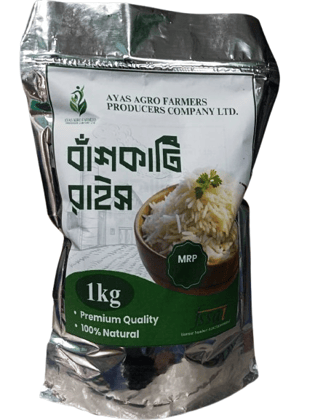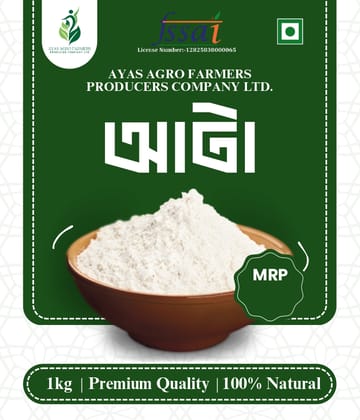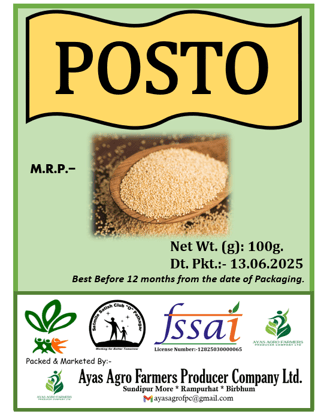Gobindobhog rice (Bengali: গোবিন্দভোগ) is a highly prized short-grain, white, aromatic, and sticky rice primarily cultivated in the state of West Bengal, India.
Read MoreGOBINDABHOG RICE- 1Kg.
Key Attributes
| Country of origin | India |
|---|---|
| Net Quantity | 1 kilogram |
| Product Dimensions | 28L x 18W x 28H cm |
| Manufacturer or packer name | Ayas Agro Farmers Producer Company Limited |
Gobindobhog rice (Bengali: গোবিন্দভোগ) is a highly prized short-grain, white, aromatic, and sticky rice primarily cultivated in the state of West Bengal, India.
Here's a detailed description of Gobindobhog rice:
1. Characteristics:
- Aroma: It is renowned for its natural, sweet, and subtle aroma, which becomes even more prominent when cooked.
This distinct fragrance is a key identifying feature. - Grain Type: Gobindobhog is a short-grain rice, unlike the long-grained Basmati.
The grains are plump and delicate. - Texture: When cooked, it becomes sticky and soft, making it ideal for various preparations. It has a fluffy texture.
- Flavor: It possesses a sweet and slightly buttery flavor that enhances the taste of dishes it's used in.
- Color: It is a white rice.
- Nutritional Value: Despite being polished (though often subjected to only one polishing stage to preserve some fiber), it retains nutritional value.
It is a good source of carbohydrates for energy, contains moderate dietary fiber for digestion, is low in fat, and is rich in antioxidants and minerals like magnesium. It's also considered easier to digest than some other white rice varieties.
2. Origin and Cultivation:
- Geographical Indication (GI) Tag: In August 2017, Gobindobhog rice was granted a Geographical Indication (GI) tag by the Government of India.
This recognition ensures that only rice cultivated in West Bengal, adhering to specific traditional practices and possessing its unique qualities, can be marketed as "Gobindobhog." This protects its authenticity and helps farmers. - Primary Cultivation Areas: Traditionally, it was cultivated in the districts of Bardhaman, Hooghly, Nadia, and Birbhum. Later, its cultivation expanded to Bankura and Purulia. The East Burdwan district, particularly the southern basin of the Damodar River (Raina 1, Raina 2, and Khandaghosh blocks), is a prominent area for its cultivation and is often referred to as the "rice bowl of West Bengal" due to this variety.
- Cultivation Practices: It is often cultivated late, after the rainy season, which makes it less susceptible to rain-related damage and pests.
Organic cultivation practices, utilizing cow dung, cow urine, and leaf compost instead of chemical fertilizers and pesticides, are also employed by some farmers to maintain its natural quality.
3. Culinary Uses: Gobindobhog rice is a staple in Bengali cuisine and is highly versatile:
- Traditional Bengali Dishes: It is widely used for preparing classic Bengali dishes like:
- Payesh (Rice Pudding): Its sticky texture and sweet aroma are perfect for this popular dessert.
- Khichuri (Rice and Lentil Dish): Especially "Bhoger Khichuri," a flavorful, often ceremonial version.
- Pulao: Its aromatic qualities make it excellent for various sweet and savory pulao preparations.
- Mishti Pulao: A sweetened, aromatic rice dish.
- Payesh (Rice Pudding): Its sticky texture and sweet aroma are perfect for this popular dessert.
- Other Dishes: It can also be used for:
- Steamed Rice: Enjoyed with curries and other side dishes.
- Kheer (Indian Rice Pudding)
- Rice Flour: Used for various desserts and breads.
- Its ability to absorb flavors also makes it suitable for fusion cuisine, and it can be incorporated into dishes like risotto or even certain stir-fried rice recipes.
4. Cultural and Religious Significance: The name "Gobindobhog" itself signifies its importance. "Gobindo" refers to Lord Krishna (or Govindaji), and "Bhog" means offering.
| Country of origin | India |
|---|---|
| Common name | GOBINDABHOG RICE |
| Net Quantity | 1 kilogram |
| Weight | 1000 g |
| Package Dimension | 28L x 18W x 28H cm |
| Product Dimensions | 28L x 18W x 28H cm |
| Manufacturer or packer name | Ayas Agro Farmers Producer Company Limited |
| Manufacturer or packer address | PLOT NO- 904 , KHATIYAN NO- 3227, JL NO- 079,,Rampurhat |
| Manufacturing Date | June |
| contact details consumer care | Ayas Agro Farmers Producer Company Limited, [email protected] |
